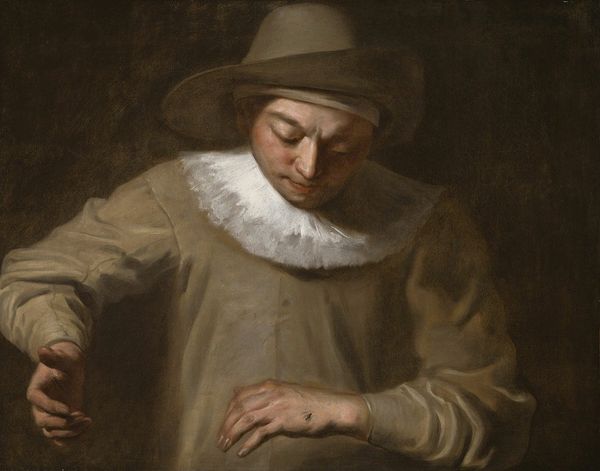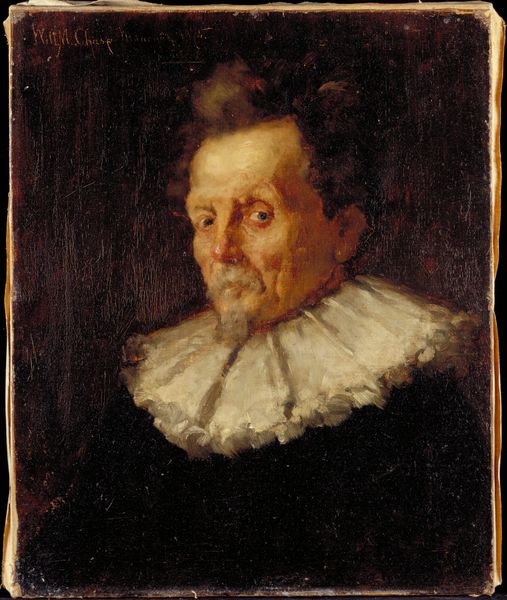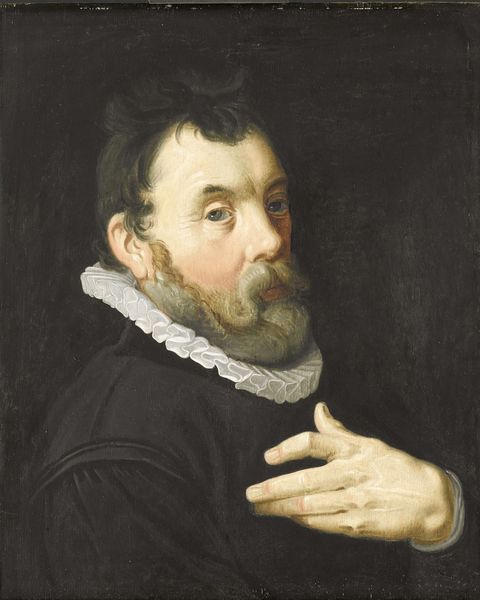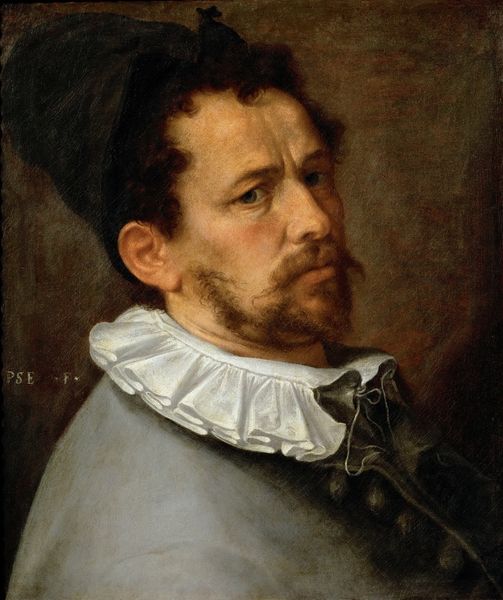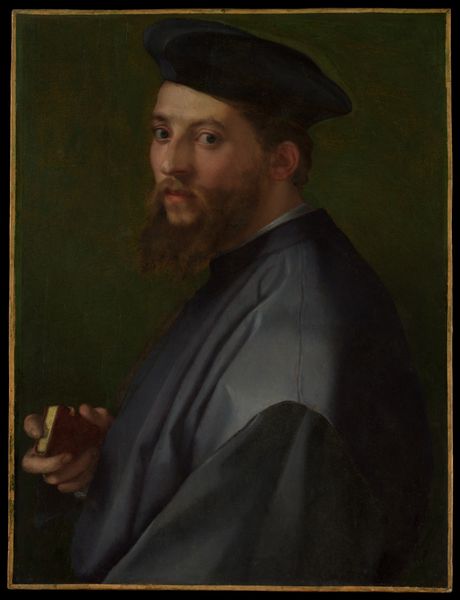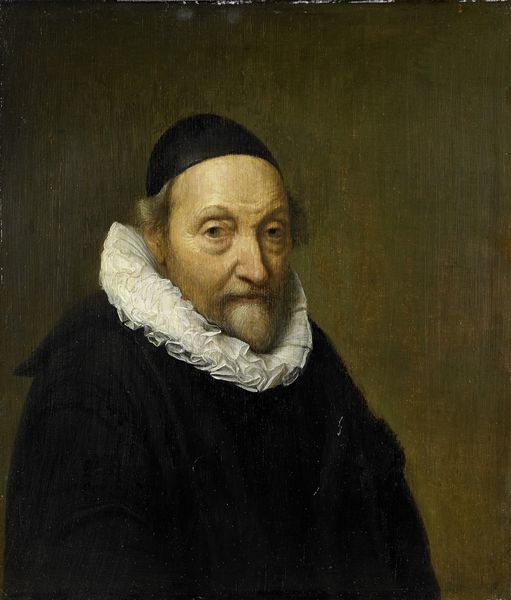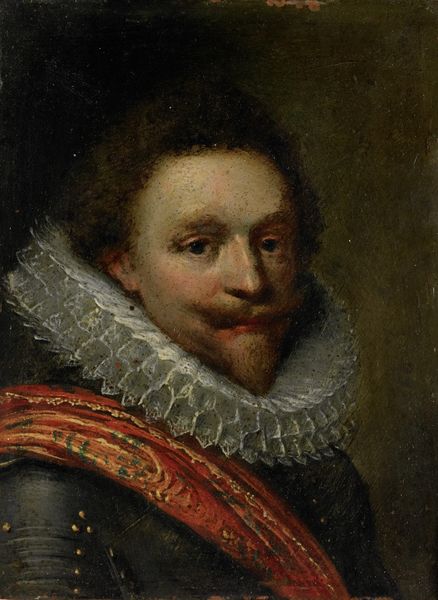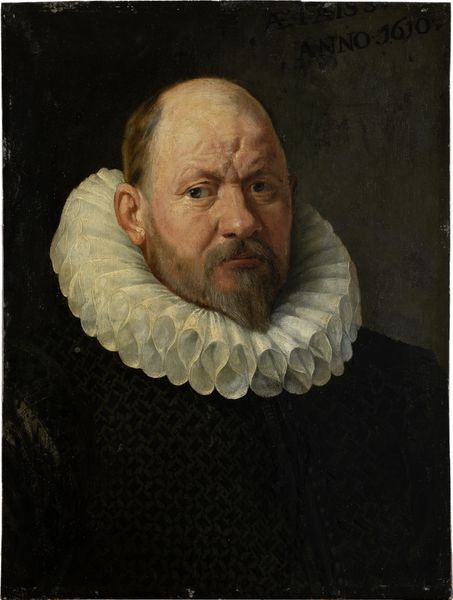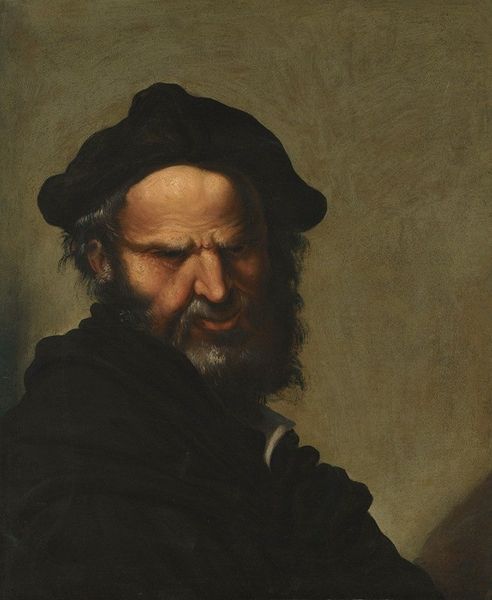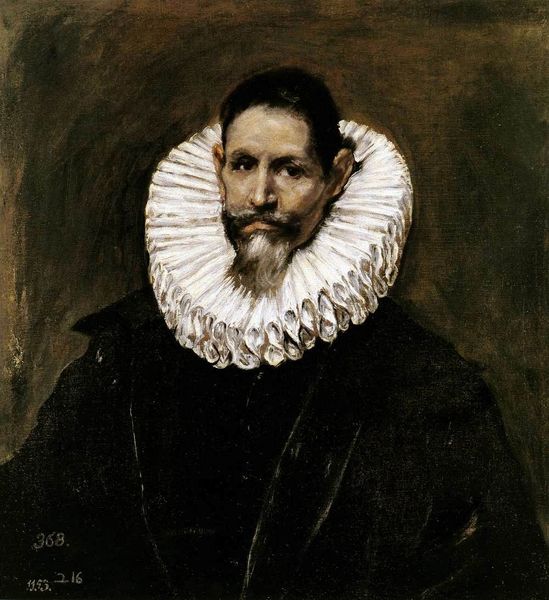
oil-paint
#
portrait
#
baroque
#
oil-paint
#
figuration
#
history-painting
#
academic-art
Dimensions: height 56 cm, width 50 cm, depth 6 cm
Copyright: Rijks Museum: Open Domain
Curator: Looking at Cornelis Ketel’s oil painting "Portrait of Hendrick de Keyser," dating from around 1600 to 1613, I immediately notice the sitter holding a statuette of a nude male figure. What’s your take on it? Editor: Well, the somber mood strikes me first. The dark background, the sitter's direct gaze. There's a sense of self-awareness, maybe even a touch of melancholy that resonates across centuries. It’s almost confrontational. Curator: Interesting, because Ketel includes the small sculpture. Note the way the artist invites a comparison between the sculpture held in de Keyser’s hand and the larger human form of the subject. Do you consider this dynamic? Editor: Absolutely. It raises questions about the societal views of art and artistry, power structures, and representation in that time period. Who gets to create, who is considered beautiful, who controls the narrative? The image speaks of privilege and the male gaze that were prevalent at the time. Curator: Right, consider this portrait alongside other Ketel paintings; we often see allusions to classical antiquity. His use of allegory is deliberate, connecting his subjects to a lineage of artists and intellectuals. De Keyser, as a celebrated sculptor, holds his artistic process—literally—in his hand. This creates a continuous thread linking artistry to historical power dynamics, Editor: I also read de Keyser’s somewhat smug facial expression, like he’s saying “Look at this perfect rendering that *I* made” and the symbolism makes it deeply patriarchal in nature. This portrayal upholds societal hierarchies, right? Curator: Well, it is quite difficult for modern viewers to access the mindset of men and women of the late 16th and early 17th century. This image acts as a cultural touchstone, preserving the history of an artist as understood in their era. Editor: It’s a potent reminder of how representation shapes perceptions. Analyzing the power dynamics can push us to consider diverse narratives often excluded by artworks like this. Curator: The artwork becomes richer when we approach it from different points of view. Thank you for providing insight through an alternative cultural lens! Editor: Likewise; by engaging critically, even with artworks created under oppressive assumptions, we can promote inclusive values.
Comments
No comments
Be the first to comment and join the conversation on the ultimate creative platform.

